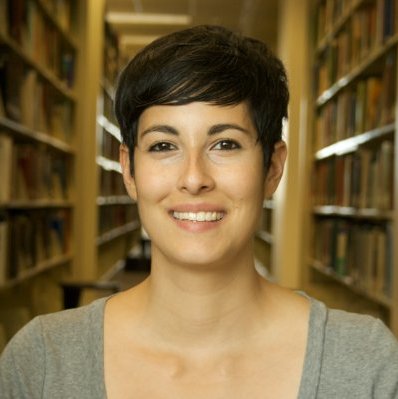
If you’ve ever had food poisoning, you may recall the feeling of nauseated doom that takes over your body. The typical prescription is to let it take its course. But what if we could go to the pharmacy and pick up a drug for food poisoning the same way we do for the common cold? Anice Sabag-Daigle, a research scientist in the laboratory of Dr. Brian Ahmer at The Ohio State University’s College of Medicine Department of Microbial Infection and Immunity, is working to make this a possibility someday.
Specifically, Sabag-Daigle studies Salmonella, a group of bacteria that often causes infection after individuals eat contaminated food.
“Salmonella is one of the top three causes of food poisoning,” Sabag-Daigle said. “We’re looking to see how it causes disease and whether we can develop new therapeutics.”
Sabag-Daigle has used OhioLINK since she was a student to educate herself on current research in her field as well as literature and journal articles related to microbial and infectious diseases. Now, as a full-time research scientist, she has her own research featured in OhioLINK’s Electronic Theses and Dissertations Center and two articles in the Electronic Journal Center.
“It’s important for other people in the field to see what other researchers are doing, but it’s also nice because then you can have people contact you and you can bounce ideas off of each other,” Sabag-Daigle said. “It can spark collaborations with other researchers, so having that access and having that out there (in OhioLINK) is important for the scientific community.”
Currently, Sabag-Daigle and fellow researchers have identified a novel pathway for a nutrient Salmonella can use. The researchers plan to use this information to develop a therapeutic for those infected with the bacteria.
The group is also studying a probiotic for chickens. Eating contaminated poultry is a common way many humans become sick from Salmonella. The probiotic could prevent chickens from becoming colonized with Salmonella before they ever reach human consumption.
While her lab is breaking ground in infectious disease research, Sabag-Daigle stressed the importance of staying abreast of what her peers are working on, as well.
“It’s important to know if someone else figures out the problem. We can use that information and tweak our research path,” she said. “Ultimately, our goal is to help people.”
Luckily, OhioLINK is constantly updating its database of over 90,000 electronic theses and dissertations, as well as its wide-reaching Electronic Journal Center with pivotal research across a wide range of academic fields.
“In order to be able to move forward in research, you always have to look backward. So having access to all the literature, all the journal articles through OhioLINK is really important,” Sabag-Daigle said.

